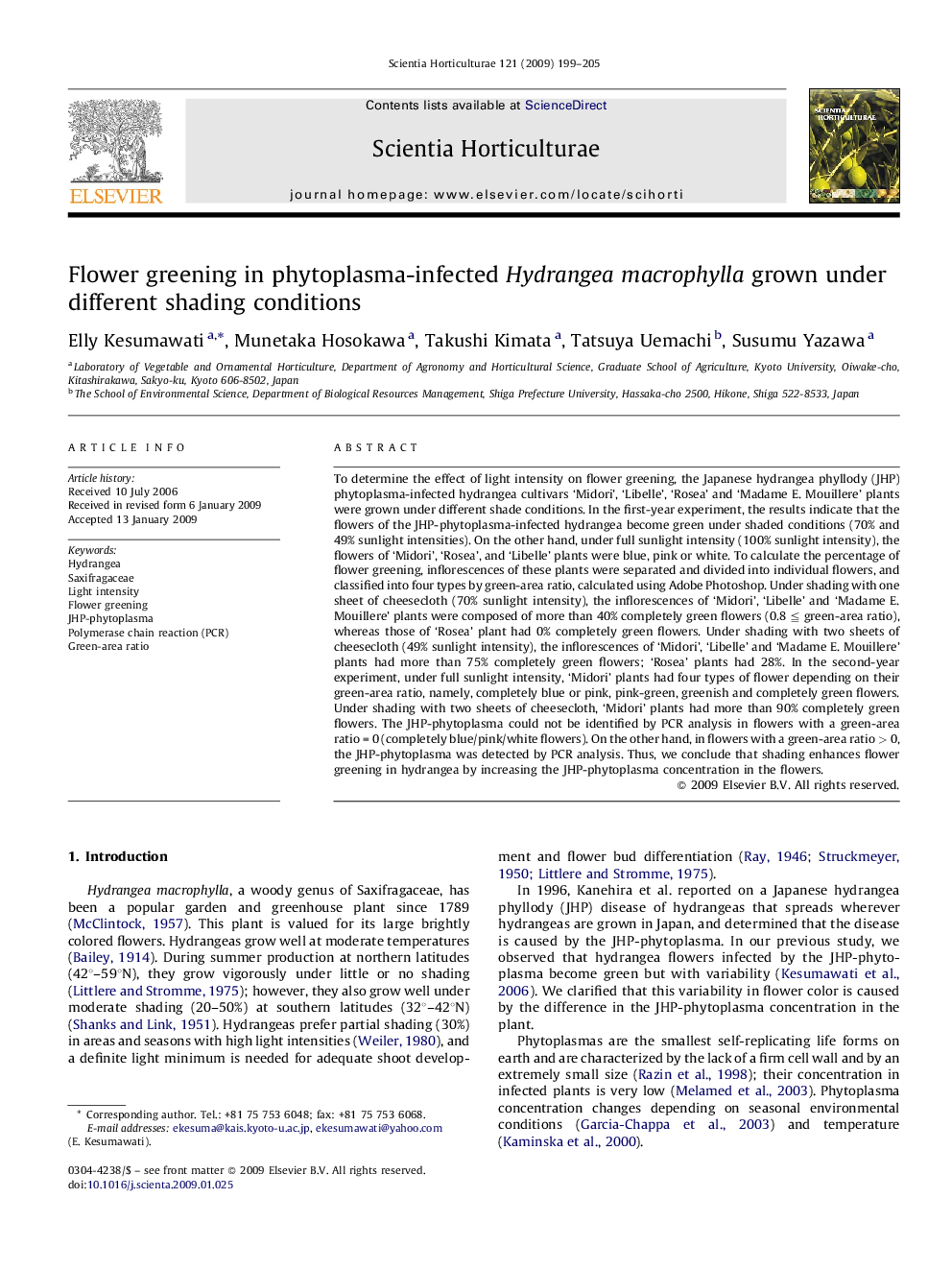| Article ID | Journal | Published Year | Pages | File Type |
|---|---|---|---|---|
| 4568944 | Scientia Horticulturae | 2009 | 7 Pages |
To determine the effect of light intensity on flower greening, the Japanese hydrangea phyllody (JHP) phytoplasma-infected hydrangea cultivars ‘Midori’, ‘Libelle’, ‘Rosea’ and ‘Madame E. Mouillere’ plants were grown under different shade conditions. In the first-year experiment, the results indicate that the flowers of the JHP-phytoplasma-infected hydrangea become green under shaded conditions (70% and 49% sunlight intensities). On the other hand, under full sunlight intensity (100% sunlight intensity), the flowers of ‘Midori’, ‘Rosea’, and ‘Libelle’ plants were blue, pink or white. To calculate the percentage of flower greening, inflorescences of these plants were separated and divided into individual flowers, and classified into four types by green-area ratio, calculated using Adobe Photoshop. Under shading with one sheet of cheesecloth (70% sunlight intensity), the inflorescences of ‘Midori’, ‘Libelle’ and ‘Madame E. Mouillere’ plants were composed of more than 40% completely green flowers (0.8 ≦ green-area ratio), whereas those of ‘Rosea’ plant had 0% completely green flowers. Under shading with two sheets of cheesecloth (49% sunlight intensity), the inflorescences of ‘Midori’, ‘Libelle’ and ‘Madame E. Mouillere’ plants had more than 75% completely green flowers; ‘Rosea’ plants had 28%. In the second-year experiment, under full sunlight intensity, ‘Midori’ plants had four types of flower depending on their green-area ratio, namely, completely blue or pink, pink-green, greenish and completely green flowers. Under shading with two sheets of cheesecloth, ‘Midori’ plants had more than 90% completely green flowers. The JHP-phytoplasma could not be identified by PCR analysis in flowers with a green-area ratio = 0 (completely blue/pink/white flowers). On the other hand, in flowers with a green-area ratio > 0, the JHP-phytoplasma was detected by PCR analysis. Thus, we conclude that shading enhances flower greening in hydrangea by increasing the JHP-phytoplasma concentration in the flowers.
